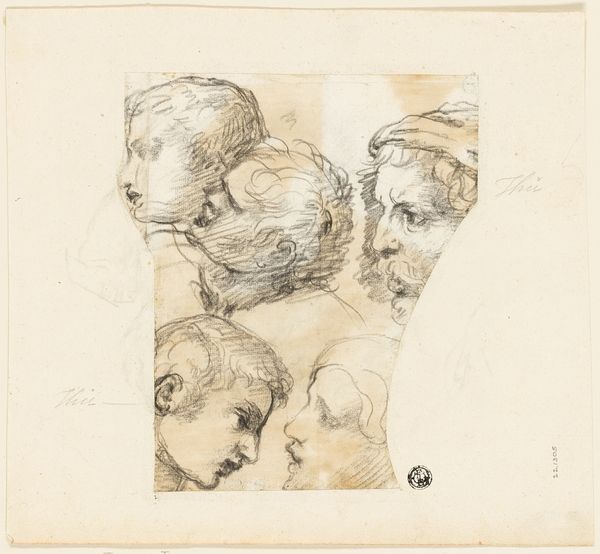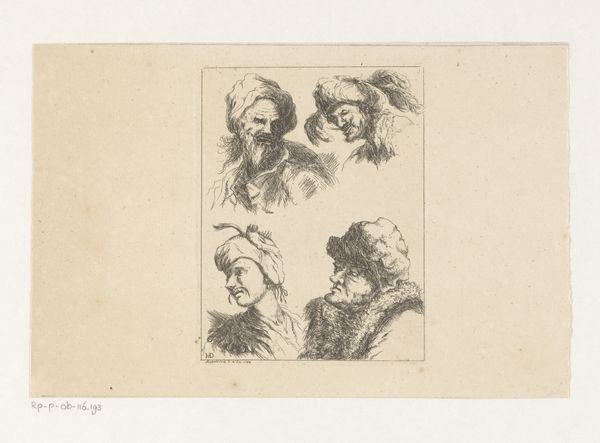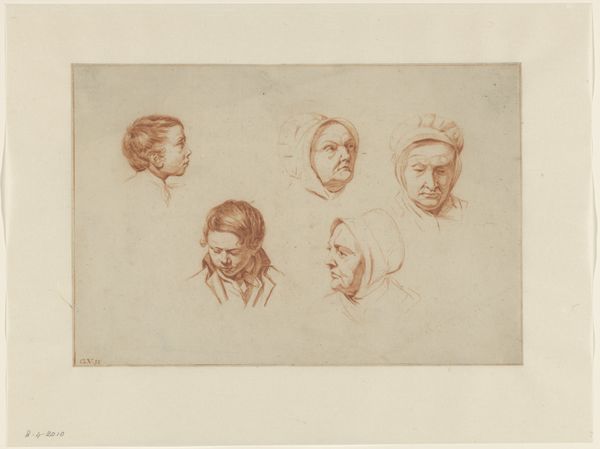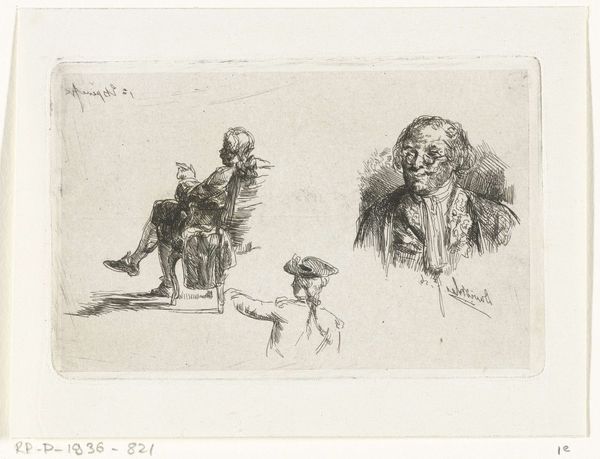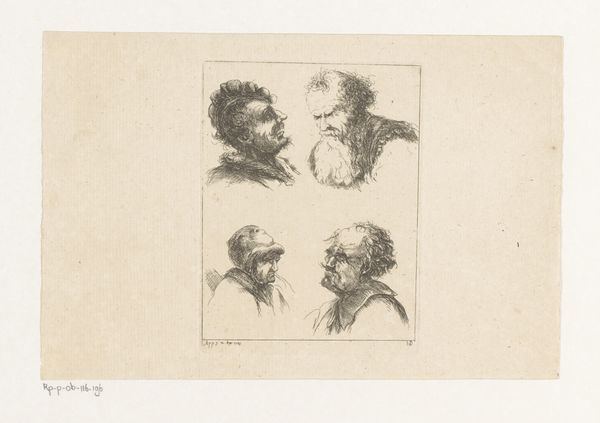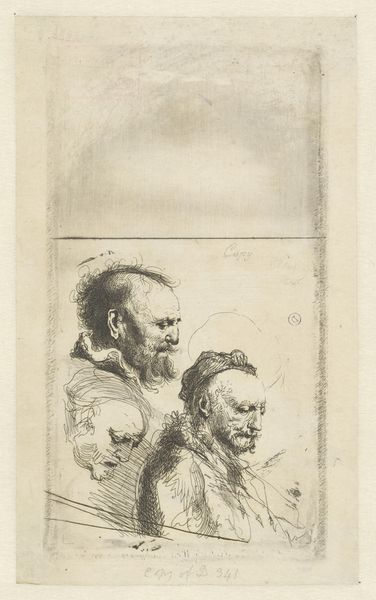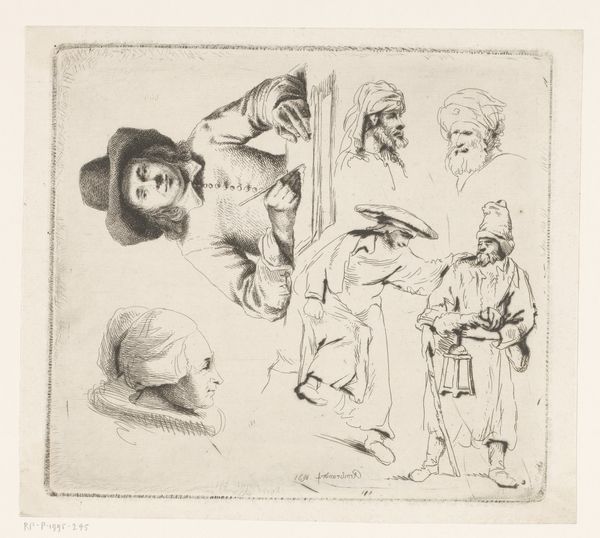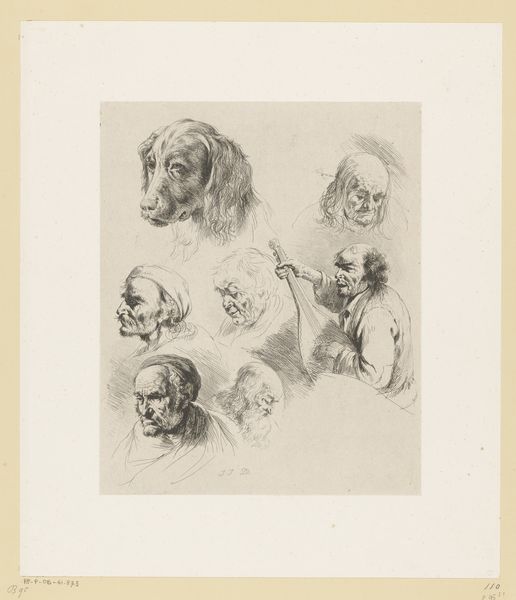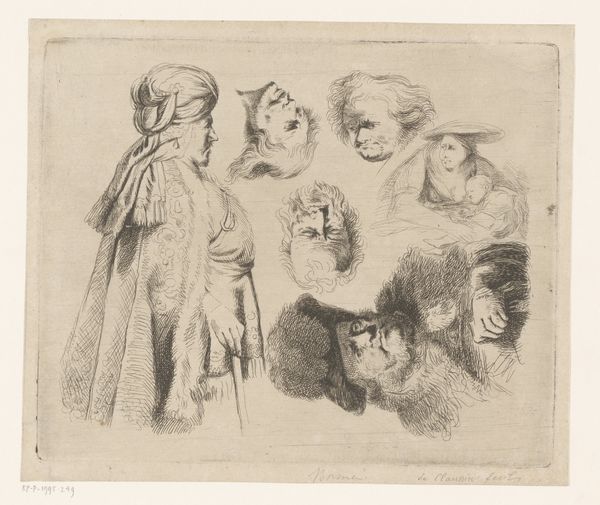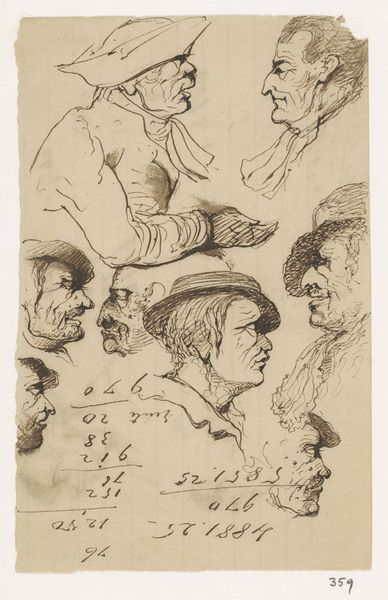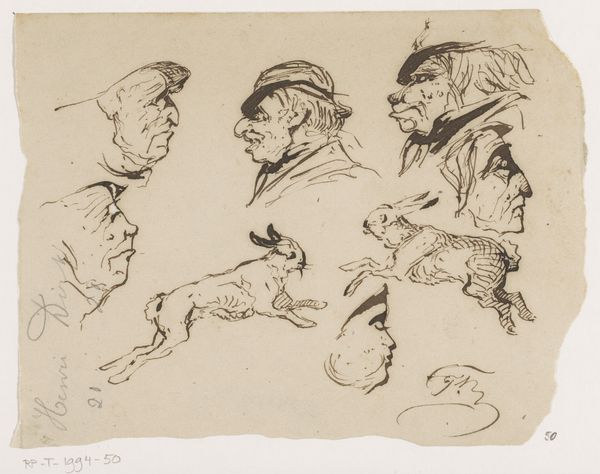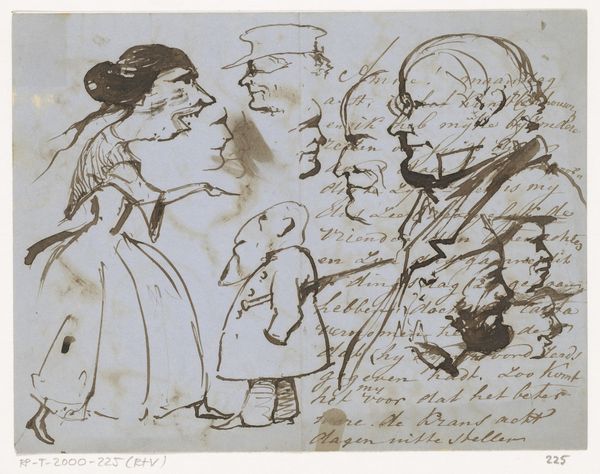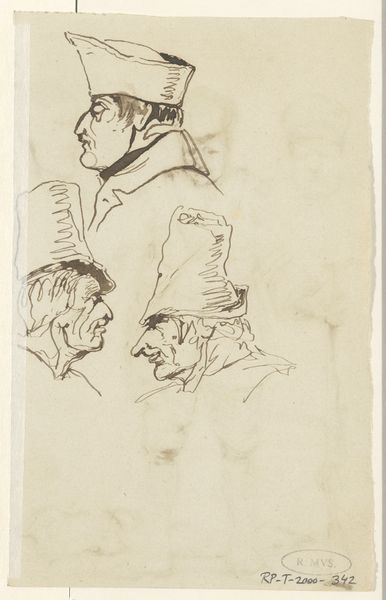
drawing, paper, ink
#
portrait
#
drawing
#
pencil sketch
#
figuration
#
paper
#
ink
#
romanticism
#
academic-art
Dimensions: height 125 mm, width 194 mm
Copyright: Rijks Museum: Open Domain
Editor: This is "Zeven portretstudies," or Seven Portrait Studies, by Gustave Buschmann, dating from 1828 to 1852, rendered in ink on paper. It has a spontaneous quality, almost like sketchbook pages combined on a single sheet. What stands out to you about the piece? Curator: Let's consider the labor embedded within. Look at the detail achieved through the application of ink; Buschmann's process reveals an understanding of material transformation. Ink, an easily reproducible commodity, here elevates seemingly ordinary paper into a platform for careful observation. Editor: I see your point about labor. The sheer number of studies does suggest focused dedication. How does this impact its role in Romanticism or Academic art? Curator: Absolutely, by meticulously deploying these readily available materials, Buschmann democratizes art making, echoing a shift towards recognizing craft, traditionally separate from high art. Editor: Interesting. So the social and economic implications of materials challenge these artistic categorizations? Curator: Precisely! What were the cultural uses of drawing within the Academic framework, especially regarding portraiture, and to what ends were Buschmann’s skills applied? Did it empower social mobility, even symbolically? Furthermore, Romanticism often idealized folk craft traditions. Here, industrial production enters artistic vision, complicating idealized historical craft, thus blurring previously maintained categories of social class. Editor: That's a perspective I hadn't considered. The deliberate act of selecting ink, processing it into meaningful marks... Curator: Exactly. How does that repetitive execution affect your appreciation of Romantic and Academic-Art expectations? Editor: I see it creates tension; while subjects reflect classical ideals, material reality shifts away from the sublime into the realm of everyday access. Curator: I'm glad to have had this conversation with you, exploring Buschmann's work through this perspective has broadened my appreciation as well. Editor: Thank you! I'm leaving with fresh questions about the social role of artistic materials during that time.
Comments
No comments
Be the first to comment and join the conversation on the ultimate creative platform.
